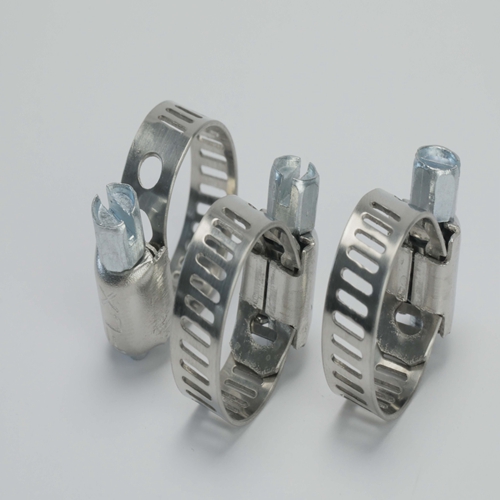- Phone:+86-17331948172 +86-0319-8862898
- E-mail: inquiry@puxingclamp.com
Nov . 24, 2024 17:43 Back to list
worm type hose clamp factory
Understanding Worm Type Hose Clamps Manufacturing Insights
Worm type hose clamps are essential components in various industries, providing reliable fastening solutions for hoses, tubes, and pipes. The design and utility of these clamps make them a popular choice among manufacturers and consumers alike. In this article, we will explore the manufacturing process of worm type hose clamps, their applications, and the advantages they bring to various sectors.
What Are Worm Type Hose Clamps?
Worm type hose clamps are metal devices used to secure hoses onto fittings, preventing leaks and ensuring fluid transfer efficiency. They consist of a band that wraps around the hose, a screw mechanism, and a housing that allows for the tightening or loosening of the band. The worm drive mechanism enables users to adjust the tightness of the clamp easily, providing a secure grip without damaging the hose.
Manufacturing Process
The production of worm type hose clamps involves several key steps
1. Material Selection High-quality stainless steel is commonly used due to its corrosion resistance and strength. Other materials, such as zinc-plated steel, are also utilized based on specific application needs.
2. Cutting and Shaping The chosen metal is cut into strips and shaped into a band. This band is then curved to create a loop that conforms to the dimensions of the specified hose.
3. Rolling and Forming The edges of the band may need to be rolled or flared to ensure they can be safely operated without sharp edges. This process adds to the clamp's durability and helps prevent damage to the hose.
4. Creating the Worm Gear The screw mechanism is central to the clamp's functionality. This component is manufactured separately, usually involving threading processes to create a spiral that allows for smooth tightening and loosening.
5. Assembly Once all parts are fabricated, they are assembled. This step often includes attaching the screw to the band and ensuring that all components fit securely.
worm type hose clamp factory

6. Finishing After assembly, clamps undergo finishing treatments, such as coating or polishing, to enhance their resistance to environmental factors and improve aesthetics.
7. Quality Control Each clamp is subjected to stringent quality checks to ensure that it meets industry standards for durability and functionality. These tests may include tensile strength tests, corrosion resistance assessments, and dimensional inspections.
Applications
Worm type hose clamps are used in various applications, including
- Automotive Securing hoses within engines and cooling systems. - Plumbing Fastening pipes in residential and commercial buildings. - Industrial Settings Used in manufacturing processes where fluid or gas transfer is essential. - Agriculture Maintaining irrigation systems and equipment.
Advantages of Worm Type Hose Clamps
The advantages of using worm type hose clamps are manifold
1. Adjustability The worm drive mechanism allows for a customizable fit, accommodating a range of hose sizes. 2. Secure Grip They provide a reliable hold, minimizing the risk of leaks caused by pressure fluctuations. 3. Durability Made from robust materials, these clamps resist corrosion and wear, making them suitable for harsh environments. 4. Ease of Use The simple tightening mechanism makes installation and removal straightforward, facilitating maintenance and repair tasks.
Conclusion
Worm type hose clamps are indispensable in ensuring the integrity and efficiency of fluid systems across various industries. Understanding the manufacturing process and the myriad of applications can help businesses choose the right products to meet their needs. With advancements in materials and technology, these clamps continue to evolve, offering even greater reliability and performance in an ever-demanding market.
-
Large Stainless Steel Adjustable American Type Hose Clamp - Hebei Pux Alloy | Corrosion Resistance, Adjustable Design
NewsAug.03,2025
-
Large Stainless Steel Adjustable American Type Hose Clamp - Hebei Pux Alloy Technology Co., Ltd | Corrosion Resistance, Adjustable Design
NewsAug.03,2025
-
Premium Stainless Steel Strip Coil | Durable & Rust-Resistant
NewsAug.03,2025
-
Large Stainless Steel Adjustable American Type Hose Clamp - Hebei Pux Alloy Technology Co., Ltd
NewsAug.03,2025
-
Large Stainless Steel Adjustable American Type Hose Clamp - Hebei Pux Alloy Technology Co., Ltd
NewsAug.02,2025
-
Large Stainless Steel Adjustable American Type Hose Clamp - Hebei Pux Alloy Technology Co., Ltd
NewsAug.02,2025




